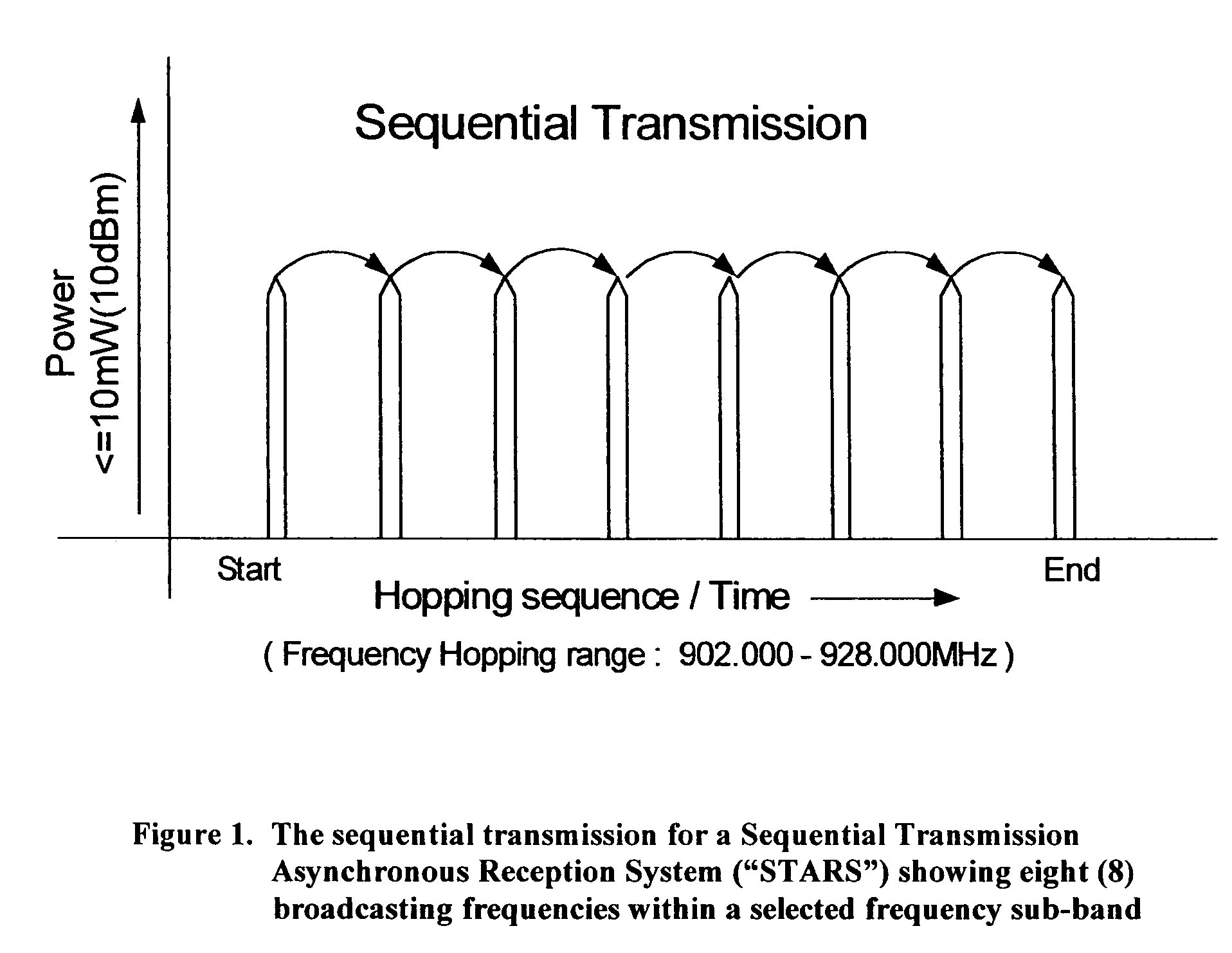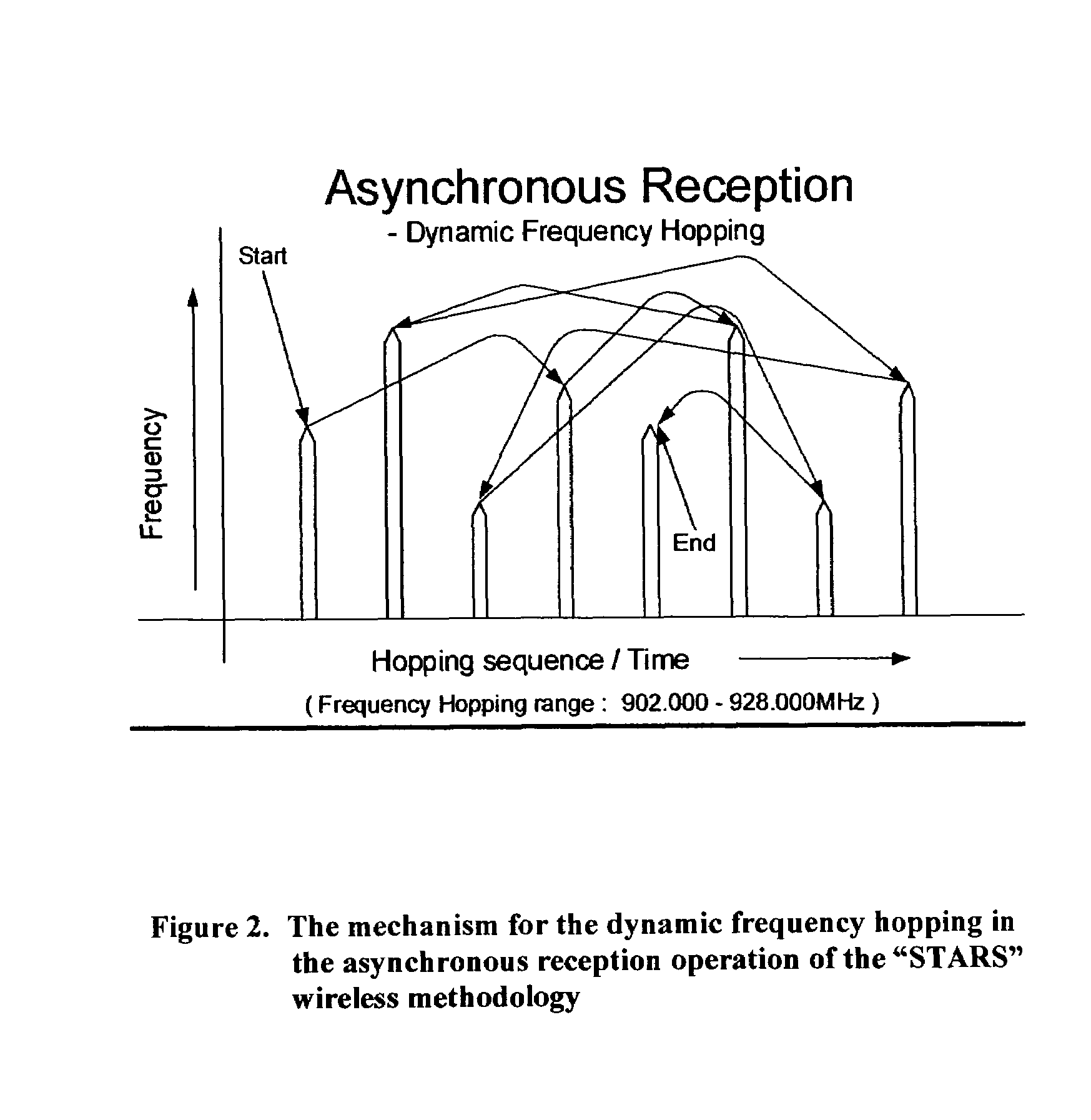Low-cost noise-immune wireless methodology for demand control ventilation (DCV) Applications
a demand control ventilation and low-cost technology, applied in adaptive control, pulse technique, instruments, etc., can solve the problems of large amount of energy wasted in conditioning incoming air, inability to achieve good co2 sensor equal efficacy, and inability to achieve energy-saving ventilation strategy in retrofitting old or existing commercial buildings. to achieve the effect of reducing the system installation cos
- Summary
- Abstract
- Description
- Claims
- Application Information
AI Technical Summary
Benefits of technology
Problems solved by technology
Method used
Image
Examples
Embodiment Construction
[0017]A preferred embodiment of the present invention deploys wireless CO2 sensors inclusive of relative humidity and temperature throughout an indoor space without the need for wiring while utilizing the license-free 902-928 MHz radio spectrum for use by Industry, Scientific and Medical (ISM) entities. In particular, the current invention uses a Sequential Transmission Asynchronous Reception System (“STARS”) technique that is software controlled for achieving a low-cost and substantially noise-immune wireless methodology for Demand Control Ventilation (DCV) applications.
[0018]One of the main reasons why DCV strategy has not been widely and successfully applied in the past to save energy in the management of old or existing commercial buildings is the high cost of wiring required for the installation of CO2 sensors throughout indoor spaces. The novel idea of deploying wireless CO2 sensors inclusive of Relative Humidity (RH) and temperature (T), the so-called Tri-sensors, thus elimin...
PUM
 Login to View More
Login to View More Abstract
Description
Claims
Application Information
 Login to View More
Login to View More - R&D
- Intellectual Property
- Life Sciences
- Materials
- Tech Scout
- Unparalleled Data Quality
- Higher Quality Content
- 60% Fewer Hallucinations
Browse by: Latest US Patents, China's latest patents, Technical Efficacy Thesaurus, Application Domain, Technology Topic, Popular Technical Reports.
© 2025 PatSnap. All rights reserved.Legal|Privacy policy|Modern Slavery Act Transparency Statement|Sitemap|About US| Contact US: help@patsnap.com



